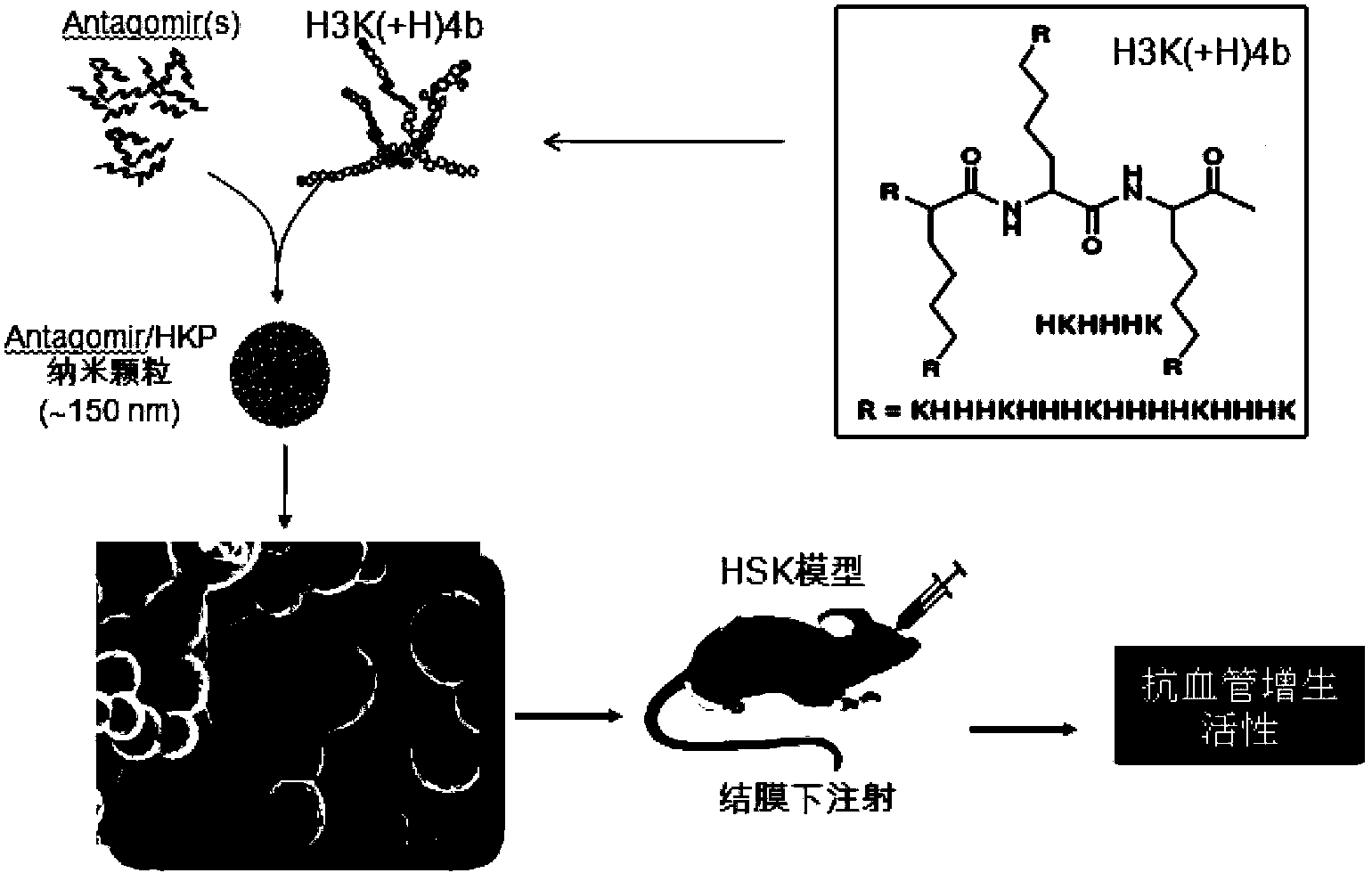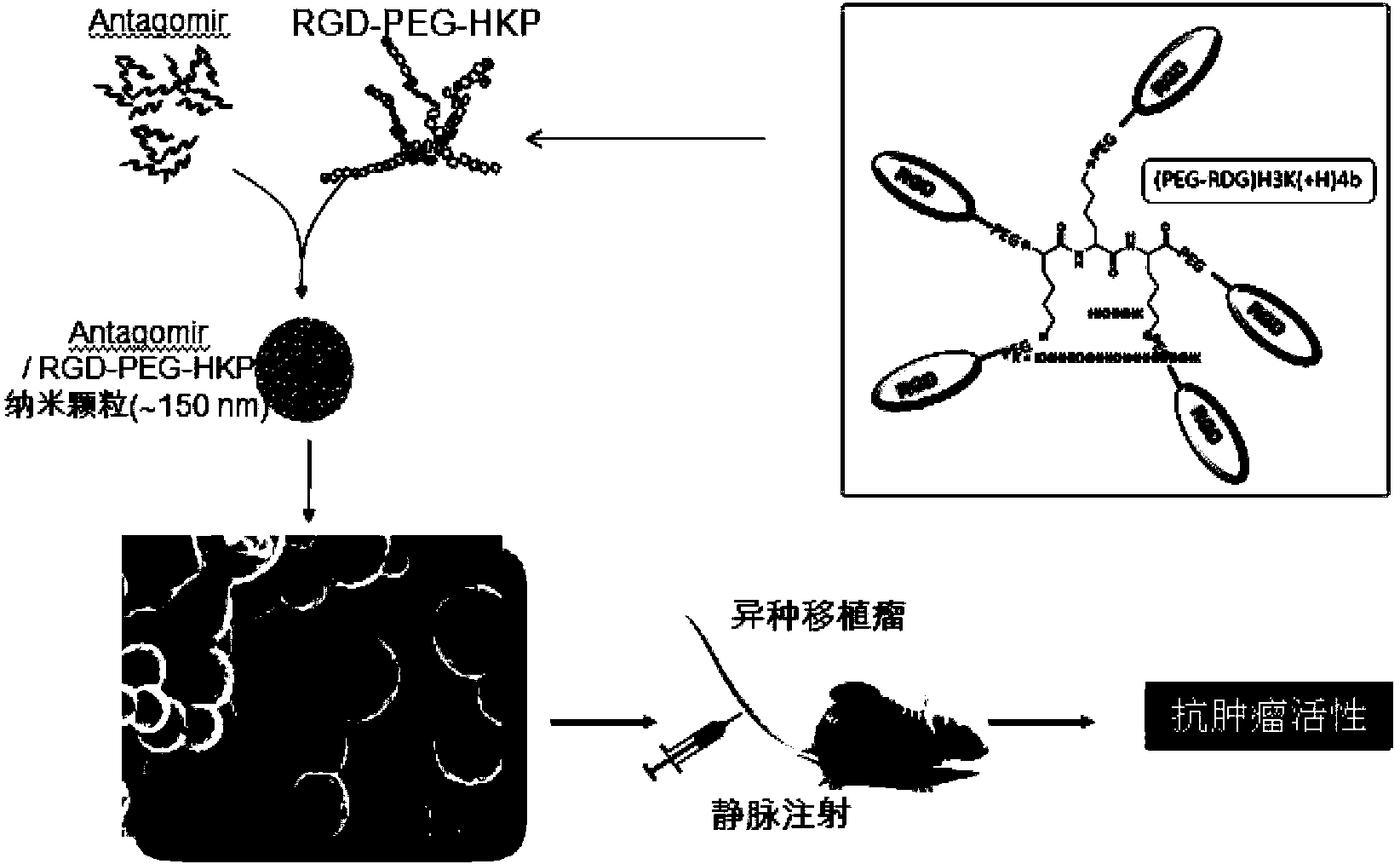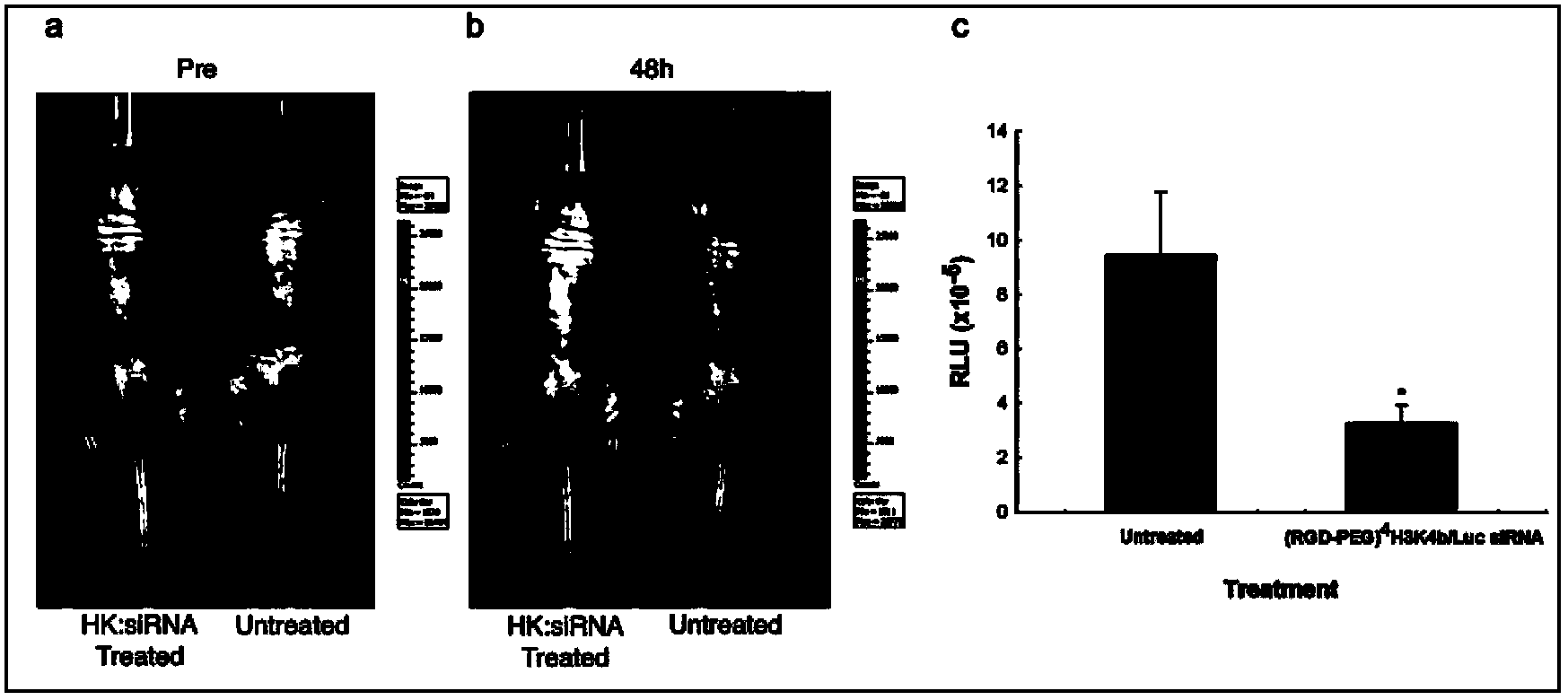Medicament for inhibiting neovascularization diseases angiogenesis by using dual-target antagomir
A proliferative disease and vascular proliferation technology, applied in cardiovascular system diseases, sensory diseases, anti-tumor drugs, etc., can solve problems such as lack of treatment methods
- Summary
- Abstract
- Description
- Claims
- Application Information
AI Technical Summary
Problems solved by technology
Method used
Image
Examples
preparation example Construction
[0084] Preparation of ligand-targeted nanoparticles: RGD-PEG-HKP aqueous solution and RNA nucleotide aqueous solution are mixed with equal volume and N / P mass ratio 4:1 to obtain nanoparticles. The electrostatic interaction between the ligand HK polymer and RNA nucleotide will promote the formation RGD-PEG-HKP / antagomir complex with an average distribution particle size of about 100 nm. The average particle size distribution and Zeta potential were measured with Brookhaven particle size analyzer Plus 90 (Brookhaven, NY).
[0085] Treat mice with antagomir-132 nanoparticles: The mice whose eyes were infected with HSV-1 RE Tumpey were divided into two groups. The treatment of Antagomir-132 nanoparticles started on the 2nd day after infection and was administered every other day until the 13th day after infection. In another group of experiments, the drug was administered on the 7th day after infection, and the drug was administered every other day until the 13th day after infec...
specific Embodiment 1
[0095] Specific Example 1. Loading siRNA or antagomir oligonucleotide into HK polymer
[0096] Antagomir-132 and disordered oligonucleotide sequences were purchased from Ambion and used according to the supplier's guidelines. The optimized histidine-lysine polymer (HKP) has been widely used for in vitro and in vivo introduction of siRNA (15,16). We use one of HKP, H3K(+H)4b, whose structure is as figure 1 As shown, concentrated siRNA or antagomir oligonucleotides can be encapsulated to form nanoparticles with an average diameter of about 150 nm. These nanoparticles contain antagomir-132 or antagomir-132 / 155, which are used to detect anti-vascular proliferation in vivo, using an animal model of herpes simplex virus stromal keratitis (HSK) induced by HSV infection. The therapeutic effects of these HKP-siRNA or HKP-antagomir preparations have been tested in various angiogenesis models and xenograft tumor models. Such as figure 1 As shown, after subconjunctival injection of H...
specific Embodiment 2
[0097] Specific Example 2. The level of miR-132 in the cornea of mice infected with herpes simplex virus increased
[0098] To detect the level of miR-132 after HSV infection in the eye, tissue samples were collected at each time point, and miRNA was extracted for QPCR analysis. Changes in miR-132 levels were observed on the 2nd day after infection, and peaked on 7 and 14 days, while the control miR-133a level did not change ( figure 2 , A and B), meanwhile, the uninfected negative control did not change the miR-132 level at the same time point (data not shown). These data indicate that the expression of miR-132 increases after the eye is infected with HSV.
PUM
| Property | Measurement | Unit |
|---|---|---|
| diameter | aaaaa | aaaaa |
| molecular weight | aaaaa | aaaaa |
Abstract
Description
Claims
Application Information
 Login to View More
Login to View More - R&D
- Intellectual Property
- Life Sciences
- Materials
- Tech Scout
- Unparalleled Data Quality
- Higher Quality Content
- 60% Fewer Hallucinations
Browse by: Latest US Patents, China's latest patents, Technical Efficacy Thesaurus, Application Domain, Technology Topic, Popular Technical Reports.
© 2025 PatSnap. All rights reserved.Legal|Privacy policy|Modern Slavery Act Transparency Statement|Sitemap|About US| Contact US: help@patsnap.com



